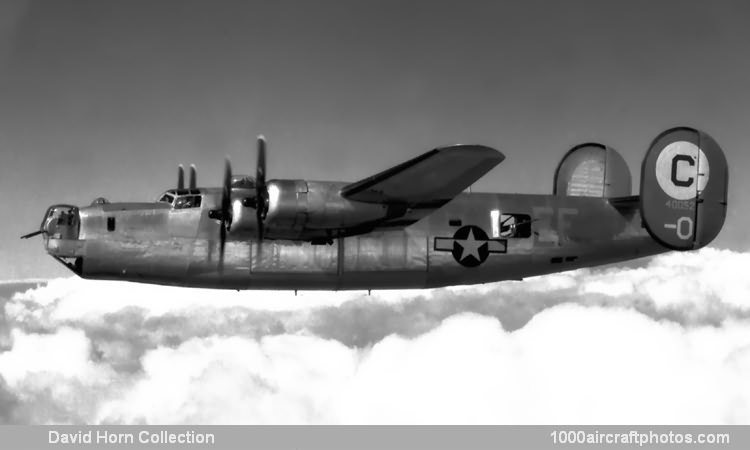04/30/2010. Remarks by Johan Visschedijk: "With the quickening pace of the B-24 production by five different manufacturers, it became apparent that the supply of Emerson turrets would be insufficient to meet the demands of all five plants, so San Diego planned to use a Consolidated-designed Motor Products manufactured turret which, like the tail turret, was hydraulically operated but drew its pressure from the main wheel brake accumulators. Distinctively shaped, it served as the chief recognition feature by which the San Diego Liberators could be distinguished from those of the other factories.
Designated B-24J and first appearing in August 1943, this model also differed from the previous B-24G and B-24H in the matter of nose wheel doors, for whereas those on the B-24J opened inwards (like the B-24D-CO), those on the other models opened outwards. The B-24J also featured a new automatic pilot (C-l model) and bombsight (M-series), revised auxiliary fuel tank transfer system and electronic supercharger regulators.
Production of the B-24J totaled 6,678, made up as follows: Consolidated at San Diego, California, 2,792; Consolidated at Fort Worth, Texas, 1,558; Douglas at Tulsa, Oklahoma, 205; North American at Dallas, Texas, 536, and by Ford at Willow Run, Michigan, 1,587.
The pictured B-24J-145-CO was assigned to the 565th Bombardment Squadron (code 'EE') of the 389th Bombardment Group (tail code 'Circle-C') while based at RAF Hethel, Norfolk, England. On April 22, 1944, while flown by Charles Van Horne and his crew, the aircraft suffered heavy battle damage: left flank split, waist window gone, punctured fuel cell and some Flak damage. It landed at RAF Earls Colne Airfield in Essex, where it was repaired by the 3rd SAD Field Engineering between April 25 and May 21, 1944. After the war the aircraft returned to the USA, its fate is unknown."
